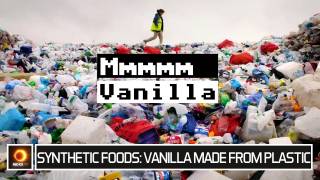Pandora’s Lunchbox: An Inside Look at Processed Foods
 You’ve heard of pink slime. You know trans fats are cardiovascular atrocities. You’re well aware that store-bought orange juice is essentially a scam. But, no matter how great of a processed-food sleuth you are, chances are you’ve never set food inside a processing plant to see how many of these products are actually made.
You’ve heard of pink slime. You know trans fats are cardiovascular atrocities. You’re well aware that store-bought orange juice is essentially a scam. But, no matter how great of a processed-food sleuth you are, chances are you’ve never set food inside a processing plant to see how many of these products are actually made.
Writer Melanie Warner, whose new exposé-on-the-world-of-processed-foods book,
Pandora’s Lunchbox, is out this week, spent the past year and a half doing exactly that. In her quest to explore the murky and convoluted world of soybean oil, milk protein concentrates (a key ingredient in processed cheese), and petroleum-based artificial dyes, she spoke to food scientists, uncovered disturbing regulatory loopholes in food law, and learned just how little we know about many of the food products on supermarket shelves.
Writer Melanie Warner, whose new exposé-on-the-world-of-processed-foods book, Pandora’s Lunchbox, is out this week, spent the past year and a half doing exactly that. In her quest to explore the murky and convoluted world of soybean oil, milk protein concentrates (a key ingredient in processed cheese), and petroleum-based artificial dyes, she spoke to food scientists, uncovered disturbing regulatory loopholes in food law, and learned just how little we know about many of the food products on supermarket shelves.
After reading Pandora’s Lunchbox, I sent Melanie some burning questions via email. Here is what she had to say:
Q. The term “processed food” is ubiquitous these days. The food industry has attempted to co-opt it by claiming canned beans, baby carrots, and frozen vegetables are “processed foods.” Can you help explain why a Pop-Tart is years away from a “processed food” like hummus?A. You have to ask yourself, could I make a Pop-Tart or Hot Pocket at home, with all those same ingredients listed on the package? How would you even go about procuring distilled monoglycerides and BHT, for instance?
Yet it is possible to make your own black beans at home by soaking and then cooking them. You could even attempt a rudimentary canning operation to preserve them. You can also make hummus by grinding chickpeas with a few other ingredients like lemon juice. The “processing” these foods go through is minimal and not disfiguring.
Q. Many people are put at ease when government agencies and the food industry state that controversial substances are “Generally Recognized as Safe” (GRAS). Why is this not as comforting as it sounds?A. The GRAS process, as it’s known, is one of self-regulation. If a food-ingredient company wants to introduce a new additive, they—not the FDA—hire some experts or a consulting firm to make the determination about whether this new ingredient is safe. Sometimes you’ll hear that company X has been awarded “GRAS status” for its new ingredient, but the FDA doesn’t award anything. The agency merely has the option to review what companies tell them.
Except when they don’t. In a glaring regulatory loophole that dates back to 1958, the GRAS system also happens to be voluntary. It’s perfectly legal for companies to keep the FDA in the dark about new additives, and consequently there are some 1,000 ingredients the FDA has no knowledge of whatsoever, according to an estimate done by the Pew Research Center.
So although the FDA seeks to reassure us they are keeping a close watch over our food, the job of rigorously regulating thousands of food additives is simply too big for an underfunded agency. Brominated vegetable oil, for instance, the subject of a well-circulated petition by a 15-year-old in Alabama, was flagged for further study in the ’70s, testing that was never done. And BHA, a “probable carcinogen” according to the Department of Health and Human Services, is still allowed in food.
Q. You investigated how soybean oil is made. Can you explain why calling it “natural” is a complete misnomer?[...]
Read the full article at:
organicconnectmag.com You’ve heard of pink slime. You know trans fats are cardiovascular atrocities. You’re well aware that store-bought orange juice is essentially a scam. But, no matter how great of a processed-food sleuth you are, chances are you’ve never set food inside a processing plant to see how many of these products are actually made.
You’ve heard of pink slime. You know trans fats are cardiovascular atrocities. You’re well aware that store-bought orange juice is essentially a scam. But, no matter how great of a processed-food sleuth you are, chances are you’ve never set food inside a processing plant to see how many of these products are actually made.





















